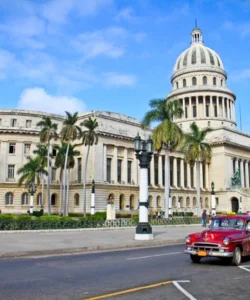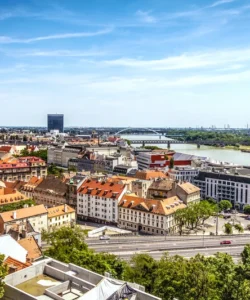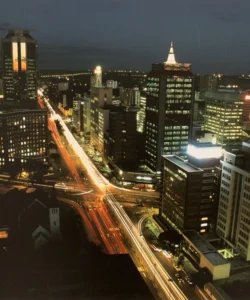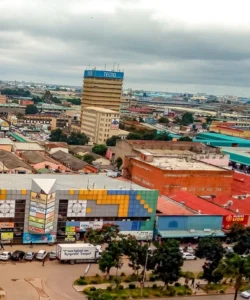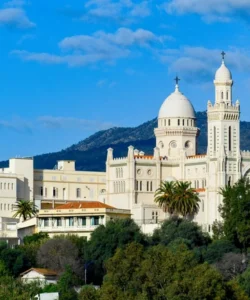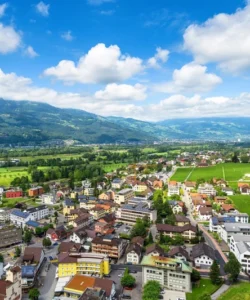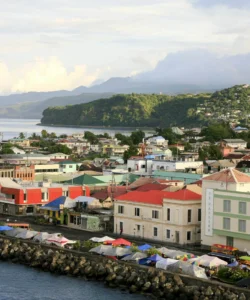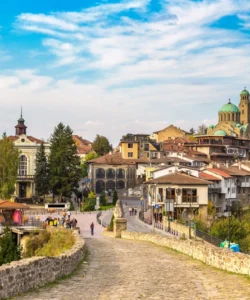Latvia, officially the Republic of Latvia, is one of the three Baltic states, located in Northern Europe. It borders Estonia to the north, Lithuania to the south, Russia to the east, and Belarus to the southeast. To the west, it has a coastline along the Baltic Sea. Latvia is known for its vast, unspoiled nature, charming medieval towns, and a unique blend of Baltic, Nordic, and Eastern European influences.
Area: Approximately 64,589 square kilometers (24,938 sq mi).
Population: As of 2023, the population is estimated at around 1.88 million.
Language: The official language is Latvian, one of the two surviving Baltic languages (along with Lithuanian). Russian is also widely spoken, particularly among the older generation and in certain regions. English is commonly understood, especially among younger people and in tourist areas.
Currency: The official currency is the Euro (EUR), which Latvia adopted on January 1, 2014.
Religion: The largest Christian denominations in Latvia are Lutheranism (Evangelical Lutheran Church of Latvia) and Roman Catholicism. There is also a significant Eastern Orthodox community (primarily among the Russian-speaking population). A considerable portion of the population identifies as non-religious.
Capital: Riga is the capital and largest city of Latvia. Its historic center is a UNESCO World Heritage site, famous for its magnificent Art Nouveau architecture and well-preserved medieval Old Town.
Major Cities: Besides Riga, other significant cities include Daugavpils, Liepāja, Jelgava, Jūrmala (a popular coastal resort town), and Ventspils.
Attractions & Wonders: Latvia offers a rich mix of urban sophistication, historical sites, and vast natural beauty:
- Riga Old Town: A UNESCO World Heritage site, it’s a captivating maze of cobbled streets, medieval buildings, and vibrant squares. Key sights include the House of the Blackheads, St. Peter’s Church (with panoramic views from its spire), Riga Cathedral, and Riga Castle.
- Art Nouveau Architecture (Riga): Riga is renowned for having one of the finest collections of Art Nouveau buildings in the world, concentrated primarily in the “Quiet Centre” around Alberta Street.
- Jūrmala: A popular seaside resort town near Riga, known for its long sandy beaches, unique wooden Art Nouveau villas, and therapeutic spas.
- Gauja National Park: Latvia’s largest national park, often called “Latvian Switzerland” due to its picturesque landscapes, ancient river valleys, sandstone cliffs, caves, and dense forests. It’s home to the medieval Turaida Museum Reserve and Sigulda Castle ruins.
- Rundāle Palace: A magnificent Baroque and Rococo palace designed by Francesco Bartolomeo Rastrelli (who also designed the Winter Palace in St. Petersburg), often called the “Versailles of the Baltics.”
- Cēsis Castle: One of the most impressive medieval castles in Latvia, with a well-preserved structure and an interesting museum.
- Cape Kolka (Kolkasrags): The northernmost point of the Kurzeme peninsula, where the Baltic Sea meets the Gulf of Riga, a significant bird migration spot.
- Kuldīga: A charming town in Kurzeme, known for its well-preserved historic center, and the widest waterfall in Europe, Ventas Rumba.
- Latvian Ethnographic Open-Air Museum: Near Riga, this museum showcases traditional Latvian rural life, architecture, and crafts.
Architecture: Latvian architecture reflects its diverse historical influences, from medieval strongholds to elegant Art Nouveau masterpieces:
- Medieval: Predominantly seen in the Old Towns of Riga and Cēsis, featuring Gothic churches, castles, and Hanseatic merchant houses.
- Baroque and Rococo: Exemplified by the grandeur of Rundāle Palace and some churches.
- Art Nouveau (Jugendstil): Riga is a world-class center for this style, characterized by elaborate facades, floral motifs, and decorative elements from the late 19th and early 20th centuries.
- Wooden Architecture: Traditional wooden houses and villas are a significant part of Latvia’s architectural heritage, especially in Jūrmala and rural areas.
- Soviet Era: Large, functional concrete apartment blocks and some brutalist public buildings are characteristic of the Soviet period in urban centers.
- Contemporary: Modern Latvian architecture is diverse, with a growing focus on innovative and sustainable designs, particularly in new urban developments and public spaces.
Roads: Latvia has a generally good and improving road network. The main highways connecting major cities are well-maintained. Roads in rural areas can vary in quality, with some unpaved sections, but overall, driving is efficient. Road signs are clear, and traffic density is generally lower outside of Riga.
Hotels: Latvia offers a wide range of accommodation options. In Riga, you’ll find everything from luxurious international chain hotels and upscale boutique hotels within the Old Town and Art Nouveau districts to budget-friendly hostels and guesthouses. Outside the capital, options include charming rural guesthouses, farm stays, spa hotels, and seaside resorts, particularly in Jūrmala and along the Baltic coast.
Restaurants: Latvian cuisine is hearty and often influenced by its Baltic, Nordic, and Eastern European neighbors. It features ingredients like potatoes, rye bread, meat (pork is common), fish, and various dairy products.
- Riga’s culinary scene is vibrant, offering traditional Latvian fare alongside international cuisine, modern European restaurants, and trendy cafes. There’s a growing emphasis on local and seasonal ingredients.
- Traditional Latvian Dishes:
- Rye Bread (Rupjmaize): A staple, dark and dense, often used in desserts as well.
- Gray Peas with Speķis (Pelēkie zirņi ar speķi): A traditional dish of boiled gray peas with fried smoked bacon.
- Skābu kāpostu zupa: Sauerkraut soup, a warming and hearty dish.
- Karbonāde: Breaded and fried pork cutlet, similar to a schnitzel.
- Zupa ar frikadelēm: Meatball soup.
- Rupjmaizes kārtojums: A popular dessert made layering rye bread crumbs, whipped cream, and berry jam.
- Smoked Fish: Especially along the coast, smoked Baltic herring and other fish are popular.
- Kvass: A traditional fermented beverage made from rye bread.
- Baltic sprats: Small fish, often served smoked or in oil.
- Forest berries and mushrooms: Widely used in season, reflecting Latvia’s abundant natural resources.



